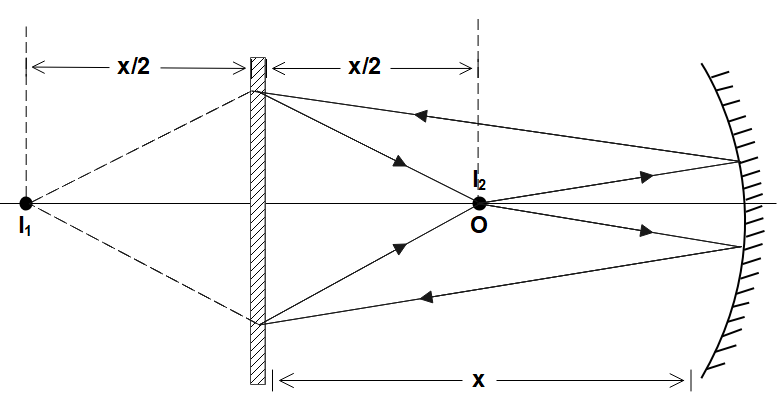














Courses
Q.
A plane mirror and a concave mirror of curvature radius 60cm are placed facing each other, with a point object at the center of them. If the image formed by first reflection at the spherical and then at the plane mirror coincides with the object, then the separation between the two mirrors.
see full answer
Talk to JEE/NEET 2025 Toppers - Learn What Actually Works!
a
b
c
d
answer is B.
(Unlock A.I Detailed Solution for FREE)
Ready to Test Your Skills?
Check your Performance Today with our Free Mock Test used by Toppers!
Take Free Test
Detailed Solution
Let’s draw a simple sketch from the information given in the question for a better understanding.

From the diagram, you should be able to understand that the incident rays from are reflected onto the plane mirror. This forms an image in the plane mirror, which we’ll be calling . Now this image 1 will act as the object for the plane mirror. So, its reflection forms an image again at , as per the question. Let’s assume ‘’ to be the distance between the mirrors and the object is placed at the center of them, say .
Now, based on the diagram we can easily solve the question.
We have the mirror formula as,
Where,
is the focal distance
is the object distance
is the image distance
They’ve given the radius of curvature of the concave mirror as , so the focal length is . The negative sign indicates that distances are measured from the pole, opposite to the direction of incident rays. Similarly, the object is placed at the center of two mirrors, so we have .
Substituting these values in the mirror equation, we have
The image is formed at this distance from the concave mirror. This image acts as an object for the plane mirror. Now, they’ve given in the question, that the plane mirror forms the image at . From this, we need to understand that the object is at distance from the plane mirror as it forms its image at distance. So, the actual distance of from the concave mirror will be
Now the distance of from the concave mirror will be .
Equating this to the result we’ve obtained,
Hence, option B is correct.
Best Courses for You

JEE

NEET

Foundation JEE

Foundation NEET

CBSE



